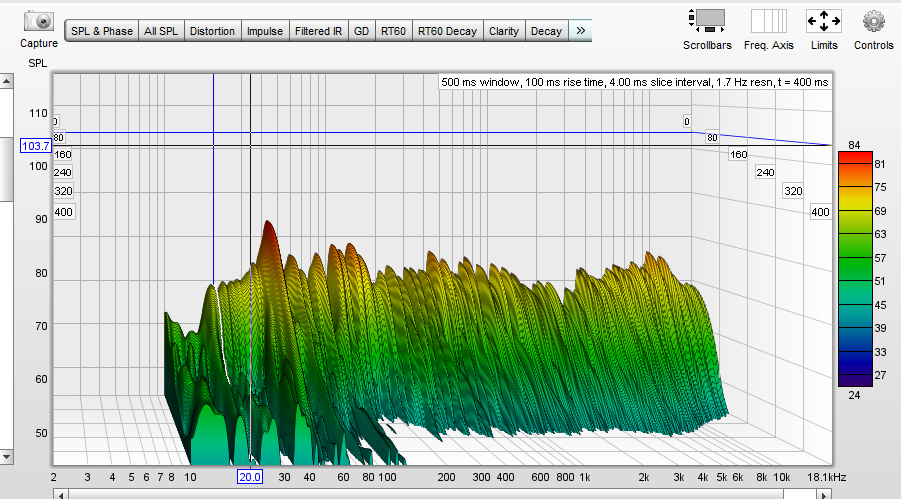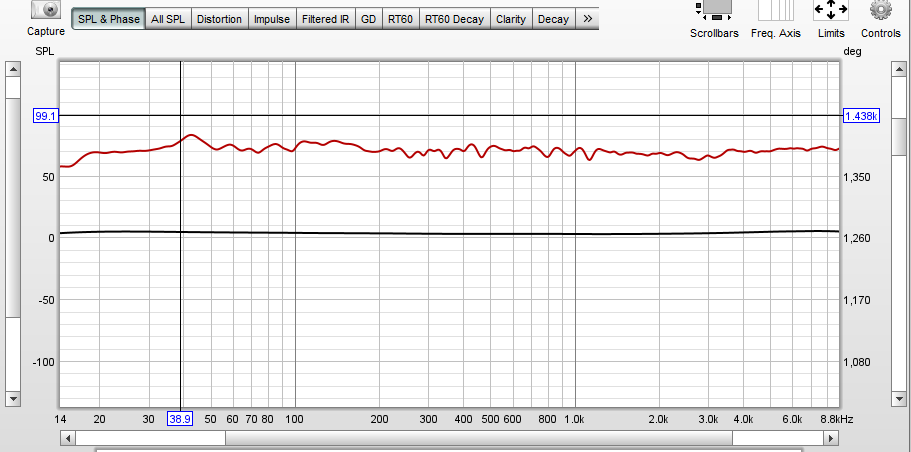"Boomy" would normally show a peak in the 70-80Hz area, which you don't have.
The graphs are a waste of time, if you're happy with what you hear.
Shouldn't This Sound Boomy?
I have recently purchased a mic and I’m running REW to test my room response. These are the resulting charts:


I hear nice tight bass when I play music. I hear a big improvement over my previous speakers. The mid range and treble sound great and again the bass sounds articulate and tight. I would think this would be boomy and muddled. Unfortunately, I did not have the ability to test my previous speakers. The room is treated with GIK panels, but I have no bass traps in the corners due to the spouse approval factor. Am I a horrible listener that can’t hear this, or am I missing something else?
I use REW and take responses from 4 different points in a 5 ft spread , sometimes just moving the-speakers a few inches can make for better imaging ,and first off the speakers need to be exactly the same distance from the wall behind them and try to get the same toe in ,this alone can take hours after remeasuring after each adjustment. |
@erik_squires Misjudged the graph. Thanks. Re:
This was true for me until I used the graphs to improve the response. Then, I was MORE pleased with what I heard. In other words, graphs are useful if you want to improve the sound. If you prefer to not bother, then graphs are a waste of time. |
@baclagg , This looks more like I would expect. By 28 Hz your bass is down 15dB. To give you the feel of a live performance you want you bass up 5 to 10 dB between 20 and 30 Hz. This is what subwoofers are for. At 200 Hz there is a 7 dB variation between channels. This is probably the wall. Middle C is 254 H. This will mess up your image a bit. Otherwise the speakers track each other very nicely. So the image is not going to be bad at all but it could be better. The overall curve is downsloping to 2200 hz which is down 15 dB from baseline. This will lead to a darker more forward presentation. Easy to listen to but not entirely accurate. You can play around above 10 kHz and below 100 Hz without changing the staging but between 100 Hz and 10 kHz you want absolutely flat in both channels. Now that you are measuring you have to gain the ability to do something about it. That something would be digital signal processing and the ability to EQ each channel individually. Digital preamp/processors like the DEQX, Anthem, Trinnov and MiniDSP units give you that capability. After you listen to a flat system for a while you can get a feel for what any system is doing just by listening. You also learn what your preferences are and how to make any system sound the way you like. I boost bass by 3dB/oct below 100 Hz. It gives you the feel of a live concert at more reasonable levels. I ramp the treble up 6 dB/oct above 12 kHz to make up for my older hearing. A younger person may not like this. |
Other than that one peak in the 40+ range, yout graphs look pretty good. Question, are your speakers rear ported? My KEF’s have 2 rear ports and a couple of different “Tuned” inserts to change the bass characteristics. Back in history, I used small sponges and placed them at different spots in the ports to adjust the bass. Either way, a MiniDSP should help a lot. All the best. |